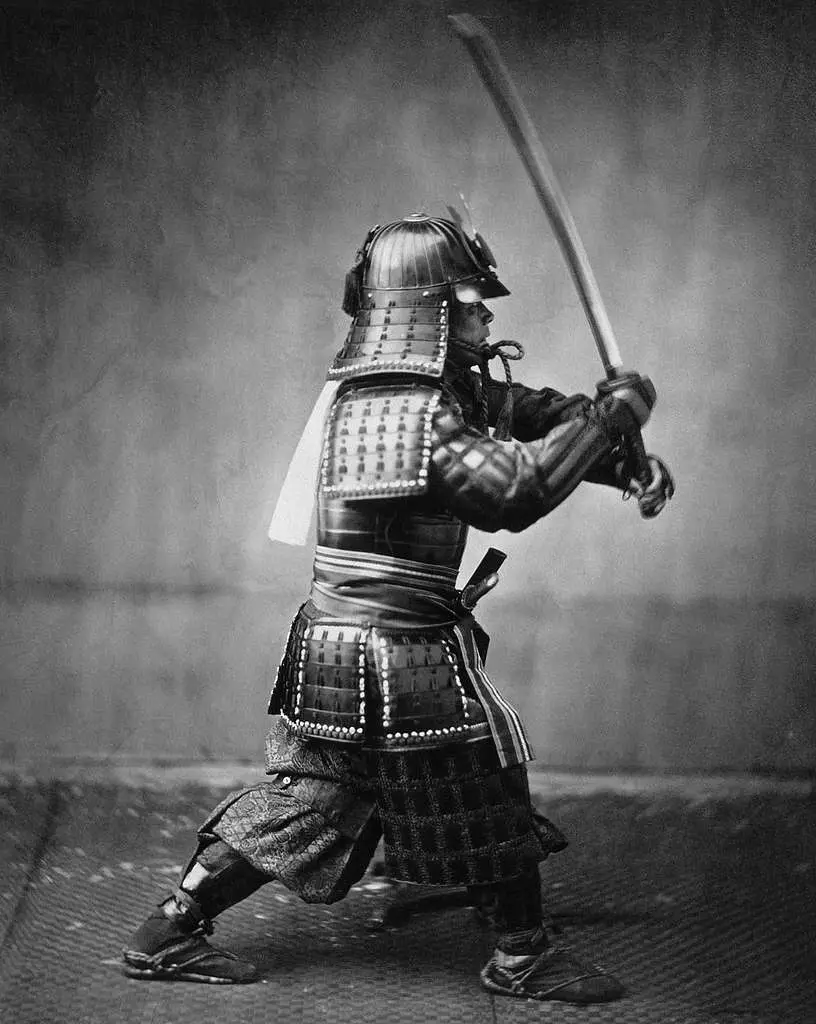Overview
Introduction to Feudal Japan
Feudal Japan was a period in Japanese history that lasted from the 12th to the 19th century. It was characterized by a hierarchical social structure, with power centralized in the hands of the shogun and the daimyo. The samurai, a warrior class, played a crucial role in maintaining order and protecting the interests of their lords. The emperor, although revered as a symbol of authority, held little actual power and often served as a figurehead. This feudal system provided stability and security, but also led to conflicts and power struggles among the ruling elite. The introduction of feudalism marked a significant shift in Japanese society and laid the foundation for the rise of the samurai and the eventual establishment of the shogunate.
The Samurai Class
The Samurai class played a crucial role in feudal Japan. They were the military nobility and served as the backbone of the ruling class. Samurai were skilled warriors who adhered to a strict code of conduct known as bushido. They were trained in various martial arts and were proficient in the use of weapons such as swords and bows. Samurai were loyal to their lords, known as daimyo, and fought for their honor and protection. They lived by a set of values that emphasized loyalty, honor, and self-discipline. Samurai were also responsible for maintaining law and order in their domains and were often involved in local governance. They were respected and feared by the common people, who relied on them for protection. The Samurai class played a significant role in shaping the political and social landscape of feudal Japan.
The Role of the Emperor
The emperor in feudal Japan held a position of great importance and reverence. Although the emperor’s power was largely ceremonial, they were considered the highest authority and symbol of the country’s unity. The emperor was believed to be a direct descendant of the gods and was considered divine. They played a crucial role in legitimizing the rule of the shogun and the samurai class. The emperor’s main responsibilities included performing religious rituals, granting titles and honors, and serving as a figurehead for the nation. Despite having limited political power, the emperor’s influence on the culture and society of feudal Japan was immense.
The Kamakura Period

The Rise of the Minamoto Clan
The rise of the Minamoto Clan marked a significant turning point in feudal Japan. Led by Minamoto no Yoritomo, the clan successfully overthrew the Taira Clan and established the Kamakura Shogunate. Yoritomo’s leadership and strategic prowess were instrumental in consolidating power and bringing stability to the region. Under the rule of the Minamoto Clan, a new era of governance and social structure emerged, known as the Kamakura Period. This period witnessed the rise of the samurai class and the establishment of the Bushido code, a set of ethical principles that governed the behavior of the samurai. The Minamoto Clan’s rise to power not only shaped the political landscape of Japan but also had a profound impact on the cultural and societal values of the time.
The Mongol Invasions
The Mongol Invasions were a series of military campaigns launched by the Mongol Empire against Japan in the 13th century. Led by the renowned Mongol leader Kublai Khan, these invasions aimed to conquer and subjugate Japan. The Mongols had already established a vast empire, stretching from China to Europe, and Japan was seen as the next target for expansion. The first invasion, known as the Mongol Invasion of Japan in 1274, saw a large Mongol fleet and army set sail for Japan. However, they faced strong resistance from the Japanese samurai and were ultimately unsuccessful in their attempts to conquer the country. The second invasion, known as the Mongol Invasion of Japan in 1281, was even larger in scale, with an estimated 140,000 Mongol troops and a massive fleet of ships. Once again, the Japanese samurai, led by warriors such as Yoritomo Minamoto and Hōjō Tokimune, fiercely defended their homeland and repelled the Mongol forces. The Mongol Invasions had a significant impact on Japan’s history, highlighting the resilience and military prowess of the samurai class. They also played a role in shaping Japan’s isolationist policies in the following centuries.
The Decline of the Kamakura Shogunate
The decline of the Kamakura Shogunate marked a pivotal turning point in the history of feudal Japan. The shogunate, which had been established by the Minamoto clan, faced numerous challenges that ultimately led to its downfall. One of the key factors contributing to the decline was the widespread corruption within the shogunate’s administration. As the power of the shogunate weakened, regional lords known as daimyo began to assert their authority and challenge the central government. This power struggle further weakened the shogunate, leading to internal conflicts and a loss of control over the country. Additionally, external threats such as the Mongol invasions added to the shogunate’s troubles. The failed attempts to repel the Mongol forces highlighted the vulnerability of Japan and the need for a stronger central authority. These challenges ultimately paved the way for the next period in Japanese history, the Muromachi period, and the rise of the Ashikaga Shogunate.
The Muromachi Period

The Ashikaga Shogunate
The Ashikaga Shogunate, also known as the Muromachi Shogunate, was a feudal military government that ruled Japan from 1336 to 1573. It was established by Ashikaga Takauji, a samurai who rebelled against the Kamakura Shogunate. The Ashikaga Shogunate is often referred to as the Golden Age of Zen Buddhism, as it was during this period that Zen Buddhism flourished and had a significant influence on Japanese culture and art. The shogunate faced numerous challenges, including political instability, internal conflicts, and external invasions. One of the most significant events during the Ashikaga Shogunate was the Onin War, a devastating civil war that lasted for over a decade and resulted in widespread destruction and chaos. Despite these challenges, the Ashikaga Shogunate played a crucial role in shaping Japan’s feudal society and laying the foundation for the future Tokugawa Shogunate.
The Onin War
The Onin War was a significant conflict that took place in Japan during the Muromachi Period. It was a civil war fought between two powerful samurai families, the Hosokawa and the Yamana. The war lasted for over a decade and resulted in widespread destruction and chaos. The conflict was fueled by political rivalries and power struggles within the Ashikaga Shogunate, which had weakened over time. The war also highlighted the decline of central authority in Japan and the rise of regional warlords who sought to assert their dominance. The Onin War had a profound impact on the social and political landscape of Japan, leading to a period of instability and unrest. It set the stage for the rise of the daimyo, powerful feudal lords who would eventually challenge the authority of the shogunate. The war also marked the beginning of a shift in power from the samurai class to the emerging merchant class. The Onin War is often regarded as a turning point in Japanese history, signaling the end of the medieval period and the beginning of the early modern era.
The Golden Age of Zen Buddhism
During the Muromachi Period, Zen Buddhism flourished and reached its peak, becoming an integral part of Japanese culture. Zen teachings emphasized meditation, self-discipline, and the pursuit of enlightenment. Monasteries and temples were built throughout the country, attracting a large number of followers. The Ashikaga Shogunate played a significant role in promoting Zen Buddhism and supporting the construction of Zen gardens and tea houses. The practice of Zen Buddhism influenced various aspects of Japanese society, including art, architecture, and tea ceremony. Zen masters, such as Dogen and Eisai, made significant contributions to the development and spread of Zen Buddhism in Japan. The Golden Age of Zen Buddhism was a time of spiritual awakening and artistic expression, leaving a lasting impact on Japanese culture.
The Edo Period

The Tokugawa Shogunate
The Tokugawa Shogunate, also known as the Edo Shogunate, was a feudal military government that ruled Japan from 1603 to 1868. Established by Tokugawa Ieyasu, the shogunate brought about a period of relative peace and stability after years of civil war. Under the Tokugawa rule, the samurai class became the ruling elite, while the emperor’s role was largely ceremonial. The shogunate implemented a strict social hierarchy, with the samurai at the top and the commoners at the bottom. Isolationist policies were also enforced, limiting contact with foreign countries and preserving Japan’s traditional culture. The shogunate’s centralized power and control over the daimyo, the regional lords, allowed for economic growth and urbanization. However, as the shogunate grew increasingly corrupt and stagnant, discontent among the lower classes and the rise of Western influence ultimately led to its downfall in the late 19th century.
The Isolationist Policy
During the Edo Period, one of the key policies implemented by the Tokugawa Shogunate was the Isolationist Policy. This policy aimed to restrict foreign influence and maintain internal stability within Japan. The shogunate implemented strict regulations on foreign trade and travel, effectively isolating the country from the rest of the world. The Isolationist Policy had significant impacts on various aspects of Japanese society and culture. On one hand, it led to a period of peace and stability, allowing for the development of domestic industries and arts. On the other hand, it also limited opportunities for international exchange and hindered technological advancements. Despite these limitations, the Isolationist Policy contributed to the preservation of traditional Japanese values and customs, including the Samurai Splendor. The samurai class, known for their military prowess and adherence to a strict code of honor, continued to play a significant role in society during this period. They maintained their privileged status and enjoyed a lavish lifestyle, characterized by elaborate armor, weaponry, and ceremonial attire. The Samurai Splendor became an important symbol of power and prestige, reflecting the ideals of feudal Japan.
The Fall of the Shogunate
The fall of the Shogunate marked a significant turning point in Japanese history. After centuries of rule by the Tokugawa family, the once-powerful Shogunate was on the brink of collapse. The Tokugawa Shogunate had implemented a strict isolationist policy, known as the Sakoku policy, which aimed to limit foreign influence and maintain stability within the country. However, this policy eventually led to economic stagnation and discontent among the population. As the rest of the world progressed, Japan fell behind, and the people began to demand change. The arrival of Commodore Matthew Perry’s fleet in 1853 further exposed the weaknesses of the Shogunate, as Japan was forced to open its ports to foreign trade. This event, along with growing internal unrest, ultimately led to the downfall of the Tokugawa Shogunate and the transition to a new era in Japanese history.
Avid Writer with invaluable knowledge of Humanity!
Upcoming historian with over 30 million views online.
“You make your own life.”





